Re Ian Bremmer 'Could third-party candidates upend the 2024 US election?' 3 April The current political movement in the USA…
China Seas
Written by Diana Thebaud Nicholson // November 26, 2015 // China, Geopolitics // 3 Comments
China and Japan 2012 – Senkaku/Diaoyu Islands
Japan to deploy troops near East China Sea islands
(Al Jazeera) Nearly 500 ground troops will be stationed on a southern island as tension mounts with China over disputed territory.
Japan has stepped up defence readiness with the Chinese military build-up and its aggressive patrols near the disputed islands.
Beijing insists it has sovereign rights to nearly all of the East China Sea and the South China Sea, a strategic waterway through which about one-third of all the world’s traded oil passes.
11 November
A Return to the Rule of Law in the South China Sea?
(Chatham House) The UNCLOS tribunal’s ruling that it has jurisdiction in the case brought by the Philippines will likely improve prospects for the rule of law in the South China Sea – and it is in China’s interest to contribute to this development.
China has been on a diplomatic charm offensive last week to improve its relations with neighbours who have a stake in the stability of the South China Sea (SCS), reaching out to Vietnam and Japan and culminating in the historic meeting with Taiwan’s leader Ma Ying-jeou on 7 November. This followed on from recent setbacks for its ambitions in the SCS . First, the United States sent its warship USS Lassen within 12 nautical miles of the Chinese controlled Subi Reef to challenge China’s claim to the feature. Then, on 29 October an arbitral tribunal established under the United Nations Convention on the Law of the Sea (UNCLOS) and hosted by the Permanent Court of Arbitration (PCA) at the Hague found that it has jurisdiction to hear the claims put forward by the Philippines in a case against China concerning maritime rights in a part of the SCS claimed by both.
These events could signal a new phase in China’s conduct of its SCS diplomacy, in which the international rule of law may play a more important role for both external and domestic reasons.
28 October
China ‘not frightened to fight a war’ in South China Sea after US move
(The Guardian) State-run media in belligerent mood after USS Lassen challenges Beijing’s territorial claims in disputed Spratly archipelago
How China’s artificial islands led to tension in the South China Sea
Beijing is attempting to build artificial islands, while other states in the region are looking to the US to flex its military muscle on their behalf
Control over the South China Sea and its reefs has swung violently over the centuries with the rise and fall of empires, leaving the issue of ownership in the 21st century hazy at best. China’s claims on the Spratlys and the Paracel islands to the north, are based more on historic settlement rather than geographical proximity. As the regime in Beijing has built up its long-distance “blue water” navy it has become increasingly assertive, bolstering its claims with accelerating construction work, and shrugging off calls for a regional negotiation settlement on the Spratlys’ future.
The other claimant nations have maintained outposts on the reefs, but China has raised the stakes by seeking to change the geography with significant man-made islands. In May 2015, US officials claimed the Chinese had added 2,000 acres to their outposts in the previous 18 months, much of it since January.
The US has grown increasingly alarmed at Chinese maritime muscle-flexing, combined with the lack of cohesion among America’s allies in the region, and has decided to challenge Beijing’s claims more directly on water and in the air. Tuesday’s freedom of navigation operation near the Spratly archipelago represents the first such mission near territory claimed by China in the South China Sea since 2012.
8 October
U.S. mulls sailing near disputed South China Sea islands: Pentagon official
(Reuters) – The United States is considering sailing warships close to China’s artificial islands in the South China Sea to signal it does not recognize Chinese territorial claims over the area, a U.S. defense official said on Thursday. The Financial Times newspaper cited a senior U.S. official as saying U.S. ships would sail within 12-nautical-mile zones that China claims as territory around islands it has built in the Spratly chain, within the next two weeks.
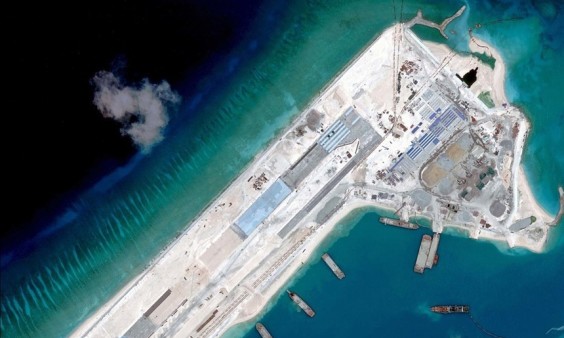
2 October
In South China Sea, a Tougher U.S. Stance
Rejecting China’s “Great Wall of Sand,” the U.S. Navy will patrol near man-made islands constructed by Beijing.
(Foreign Policy) The move toward a somewhat more muscular stance follows talks between Chinese President Xi Jinping and U.S. President Barack Obama in Washington last month, which fell far short of a breakthrough over how territorial disputes should be settled in the strategic South China Sea.
A final decision has not been made. But the Obama administration is heavily leaning toward using a show of military might after Chinese opposition ended diplomatic efforts to halt land reclamation and the construction of military outposts in the waterway. The timing and details of the patrols — which would be designed to uphold principles of freedom of navigation in international waters — are still being worked out, Obama administration and Pentagon officials said.
The move is likely to raise tensions with China. But U.S. officials have concluded that failing to sail and fly close to the man-made outposts would send a mistaken signal that Washington tacitly accepts Beijing’s far-reaching territorial claims.
15 September
Pacific Powers Build Capability, Warily Eye Neighbor Countries
(Defense News, Wendell Minnick) The majority of the 90% of global trade that travels by sea moves through narrow & vulnerable straits near Malaysia, Singapore & Taiwan. As a result of that fact, & of China’s territorial ambitions in the South-, & East-, China Seas, the Asian-Pacific nations are now engaged in a major naval arms’ race. China & India are, of course, the biggest spenders & are now building some of the most complex naval vessels the world has ever seen (while the media a while ago focused on China commissioning its first ever aircraft carrier, it has yet to twig on the fact that India has long had two carriers in service & is about to launch a third). South Korea’s ‘naval build’ plans for the next decade are only US$2BN smaller than China’s and Indonesia is outspending Japan in new naval construction (although the latter, in the face of China’s territorial clams in the East China Sea is busy ramping up its naval buildup, recently having launched its first major warship since WW II, a helicopter-carrying destroyer with two or three times the tonnage of a quintessential one). And with submarines the top priority, China, India, Indonesia, Singapore, South Korea & Vietnam have earmarked over US$40BN for their construction, while Australia, Taiwan, Thailand & Pakistan intend to join the party, and Myanmar, Bangladesh, the Philippines & even Brunei say they may follow suit as well. (26 October 2014)
China appears to be working on third airstrip on disputed South China Sea islets: expert
China appears to be carrying out preparatory work for a third airstrip in contested territory in the South China Sea, a U.S. expert said on Monday, citing satellite photographs taken last week.
The photographs taken for Washington’s Center for Strategic and International Studies (CSIS) think tank on Sept. 8 show construction on Mischief Reef, one of seven artificial islands China has created in the Spratly archipelago. The images show a retaining wall around an area 3,000 meters (3,280 yards) long, matching similar work by China on two other reefs in the Spratlys, Subi and Fiery Cross.
Asked about Mischief Reef on Monday, China’s Foreign Ministry spokesman Hong Lei repeated China’s claim to “indisputable sovereignty” over the Spratly islands and its right to establish military facilities there.
8 September
China and the Deep Blue Sea
(Project Syndicate) Since December 2013, China has added more than 1,200 hectares to islands in the South China Sea. The geopolitical implications of these land reclamation efforts are well documented: The majority of the activity has taken place on the Spratly Islands, an archipelago in the waters between Vietnam, Malaysia, and the Philippines, all of which – along with China, Taiwan, and Brunei – have competing claims to the region.
What has been less discussed is the project’s environmental impact, which borders on catastrophic. China’s activities are endangering fish stocks, threatening marine biodiversity, and creating a long-term threat to some of the world’s most spectacular sea life.
Thousands of coral reefs, seagrass beds, and other shallow-water ecosystems are rapidly being destroyed and buried as China’s leaders rush to stake their claim to the region. The land reclamation project is undermining the ecological connection between the Spratly Islands and the South China Sea, choking off the supply of nutrients upon which these ecosystems depend.
Moreover, China’s bellicose stance, together with the undefined ownership of the region and its fish stocks, has led to destructive overfishing, degrading the marine ecosystem and threatening endangered species, including sea turtles, sharks, and giant clams. Since 2010, the fishery reserves in the Spratly Islands and the western part of the South China Sea have been reduced by 16%. …
China’s claim to the Spratly Islands and a large portion of the South China Sea is based on the so-called nine-dash line, a demarcation extending far south of its territory that has been repeatedly contested since it was first proposed after World War II. And China’s recent land reclamation efforts violate several international environmental conventions, most notably the Convention on Biological Diversity (CBD) and the Convention on International Trade in Endangered Species of Wild Fauna and Flora (CITES).
8 July
Both China and Taiwan have South China Sea obligations, says Beijing
This week, Taiwan’s Foreign Ministry reiterated its claims to the South China Sea. Taiwan occupies the largest of the Spratly Islands, Itu Aba, as well as the Pratas Islands, which lie between southern Taiwan and Hong Kong.
Itu Aba boasts the larger of two landing strips in the archipelago and is the only island with its own fresh water supply, making a long-term presence possible.
5 June
Weekend Roundup: Showdown Between the U.S. and China at Mischief Reef
Trouble is brewing between the U.S. and China over the aptly named Mischief Reef and other islets in the South China Sea, which China claims. The contretemps over these tiny shoals is an early proxy battle for the grand contest of the 21st century between the rising power of China and the established American world order.
Writing this week from Beijing, Yanmei Xie argues that the U.S. should be defending a global commons in the South China Sea, not naval supremacy. Shen Dingli writes from Shanghai that China has every right to “build sovereignty” there. Harvard professor and former chair of the CIA’s National Intelligence Council, Joe Nye, says the U.S. should stick to its long-standing policy of not getting involved in territorial disputes in Asia.
2 June
China is using one of the most dangerous conflicts on the planet as a distraction
In an effort to stoke nationalism and distract its people from a slowing economy, the Chinese government has been acting particularly aggressively in the South China Sea, engaging in territorial disputes with neighbors including Japan.
This is one of the most dangerous games in the world.
For over a year China has been diligently building islands on top of reefs in the South China Sea, reclaiming 2,000 acres of land. In April, satellite imagery showed that the Chinese military had built an airstrip big enough for military aircraft.
The Global Post, a state tabloid owned by party publication The People’s Daily, wrote that any attempt by the US to stop China from building out parts of the South China Sea would inevitably end in war.
1 June
Defense Secretary Carter in Vietnam warns China again over South China Sea expansion
(PBS Newshour) During a visit to Vietnam, Defense Secretary Ashton Carter spoke out about tensions in the South China Sea, where the Chinese have been rapidly building reefs into human-made islands. President Obama said China shouldn’t be “throwing elbows” over its claim. While Beijing denies hostile intent, the Pentagon says surveillance flights have spotted artillery systems
26 May
China to extend military reach, build lighthouses in disputed waters
(Reuters) China outlined a strategy to boost its naval reach on Tuesday and held a groundbreaking ceremony for two lighthouses in disputed waters, developments likely to escalate tensions in a region already jittery about Beijing’s maritime ambitions.
In a policy document issued by the State Council, the Communist-ruled country’s cabinet, China vowed to increase its “open seas protection”, switching from air defense to both offense and defense, and criticized neighbors who take “provocative actions” on its reefs and islands.
(Quartz) China’s military looks to the ocean. The People’s Liberation Army is shifting its focus to “open seas protection,” citing a growing number of neighboring countries with an “illegal presence” on China’s reefs and islands. The shift comes after Chinese media said this week war with the US is “inevitable” unless the US backs down on criticism of Chinese building in the South China Sea.
24 May
The scramble for the South China Sea
As China tries to outmuscle its neighbours, we ask who will win the battle over the resource-rich waters.
(Al Jazeera) Everyone wants a piece of the South China Sea, a strategically important and resource-rich area in Asia. China, Vietnam, Taiwan, Japan, Philippines, Brunei and Malaysia claim some sort of ownership in a different shape or form. China claims nearly all of the South China Sea, on the basis of lines on Chinese maps published in the 1940s and locking it into disputes with several Southeast Asian neighbours.
On the face of it, it looks like China is trying to annex the area. It is building new artificial islands in an area known as the Spratlys – a move which has been seen as an attempt to assert its territorial claims by establishing physical facts in the water.
So what are the economics behind the South China Sea dispute? Who owns the world’s busiest shipping lane and what lies below the surface that is causing growing tensions?
16 May
5 things you should know about the South China Sea conflict
(PBS Newshour) Despite pressure from the United States, China is not backing down from claiming controversial territory in the South China Sea as its own.
1. Location, location, location
The geographic location of the South China Sea is strategically important. It links the Indian Ocean to the Pacific and is a critical shipping channel — about half the world’s merchant ships pass through it. Keeping the South China Sea open for commercial navigation is a top priority for both the United States and China. But stakeholders have differing views when it comes to military navigation. If China controlled the sea, it would likely limit the military navigation of foreign countries. According to the latest Pentagon report on China’s military, there is also evidence that China is expanding a corps of nuclear submarines based in Hainan, an island at China’s southern tip, in the northern portion of the South China Sea.
16-17 April
China expands claim on disputed islands by adding sand
(PBS Newshour) An archipelago in the South China Sea is claimed by Vietnam, the Philippines, Taiwan, Malaysia and Brunei. But China has recently started dumping tons of sand in the long-contested area, building up an island large enough for a military aircraft landing strip. Why the U.S. is worried about China’s land grab – Tensions among some Asian nations are growing after satellite images showed that China has been building up small islands in a disputed area of the South China Sea. Judy Woodruff talks to retired Adm. Dennis Blair, former commander of the U.S. Pacific Command, to learn more about the contested area and the U.S. response.
ASEAN Foreign Ministers Statement on the Current Developments in the South China Sea
Beijing’s Fait Accompli in the South China Sea
China is achieving its foreign policy objectives without firing a shot.
(The Diplomat) … It is a risky gamble but so far Beijing appears comfortably confident that it can still bet on the power asymmetry in the South China Sea and on the cautious, prudent responses on the part of selected targets who choose not to further “rock the boat” by desisting from more vigorous countermeasures. Vietnam’s unanticipated, stern response to the oil rig incident off the Paracel Islands last May is a rare exception. Subtly, carefully timed aggression against the right target pays dividends, even in today’s globalized context. …
Beijing’s latest clarification will not likely quell the scepticism. Instead, more questions may arise. Many will ask whether and when Beijing will put a halt to its activities in the South China Sea, and what its military and coastguard will do following the consolidation of their logistical positions to sustain physical presence in the area.
But the question should be: Will we witness the intensification of China’s coercive behaviour at sea with its ever-growing forces? Recent instances of Beijing’s gunboat diplomacy, such as the case of the Scarborough Shoal and Second Thomas Shoal, do not augur well for its future behavior, especially if emboldened by strengthened physical leverage in the South China Sea and the relative self-restraint of other claimants.
And until China truly clarifies its claims in the South China Sea, it is difficult to be sanguine about the future.
2014
13 November
China offers ASEAN friendship, loans as South China Sea tension bubbles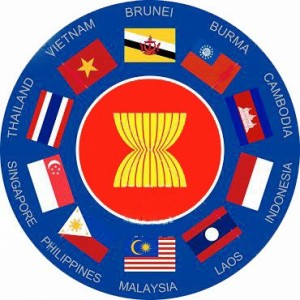
(Reuters) – China’s Prime Minister Li Keqiang proposed a friendship treaty with Southeast Asian countries and offered $20 billion in loans on Thursday but held firm on the line that Beijing will only settle South China Sea disputes directly with other claimants.
China, Taiwan and four members of the Association of Southeast Asian Nations (ASEAN) have competing claims in the sea where concern is growing of an escalation in disputes.
The treaty is seen as an attempt by China to dispel any notion it is a threat and Li said China was willing to make pacts with more countries on good-neighborliness and friendship.
Li also offered ASEAN countries $20 billion in preferential and special loans to develop infrastructure, an attractive proposition for a region struggling to fund the roads, ports and railways needed for growth.
Still, he reiterated China’s resolve to safeguard its sovereignty and its position that maritime disputes should be settled bilaterally rather than collectively or through arbitration.
The Philippines, one of the ASEAN claimants, has irked China by seeking international arbitration over China’s claims to about 90 percent of the South China Sea.
11 November
Stalled reforms, South China Sea to dominate Myanmar’s ASEAN party
Competing territorial claims between China and four ASEAN nations will form an undercurrent of tension at the meetings.
In May, China sent an oil drilling rig to waters claimed by Vietnam. The move sparked deadly anti-Chinese riots in Vietnam, which along with the Philippines has sought closer U.S. ties to counter what they see as China’s aggression.
Philippines President Benigno Aquino has said he would address what was a pressing security issue in Myanmar, but indicated some progress on Tuesday during a “meeting of minds” with Chinese counterpart Xi Jinping at the Asia-Pacific Economic Cooperation summit in Beijing.
For all the blunt backroom talk, the ASEAN group is reluctant to antagonize China. A draft of the chairman’s concluding statement, obtained by Reuters, shows little change since foreign ministers met in August.
9 August
China Rejects Push at Asean to Curb South China Sea Activity
(Bloomberg) Tensions over territorial claims in the South China Sea are dominating a meeting of foreign ministers, with China rejecting a motion by the Philippines seeking to curb its actions in disputed waters.
As the Asean Regional Forum got underway in Myanmar yesterday, the Philippines called for disputes to be resolved through arbitration within the framework of the United Nations Convention on the Law of the Sea and for a moratorium on actions that have raised tensions in the area. China’s Foreign Minister Wang Yi called the motion premature.
15 July
China tells U.S. to stay out of South China Seas dispute
(Reuters) – China told the United States on Tuesday to stay out of disputes over the South China Sea and leave countries in the region to resolve problems themselves, after Washington said it wanted a freeze on stoking tension.
Michael Fuchs, U.S. deputy assistant secretary of state for Strategy and Multilateral Affairs, said no country was solely responsible for escalating tension in the region. But he reiterated the U.S. view that “provocative and unilateral” behaviour by China had raised questions about its willingness to abide by international law.
China claims 90 percent of the South China Sea, which is believed to contain oil and gas deposits and has rich fishery resources. Brunei, Malaysia, the Philippines, Vietnam and Taiwan also lay claim to parts of the sea, where about $5 trillion of ship-borne trade passes every year.
25 June
High Tension on the High Seas — Avoiding disaster in the South China Sea
(OpenCanada) China’s goals and interests in the South China Sea differ considerably from its regional neighbours. And understanding China’s unique concerns is necessary for finding potential political solutions to the conflict.
The South China Sea dispute is not just your classic resource conflict in which each party is jostling for the largest piece of the pie. Sure, Vietnam, the Philippines, Malaysia, Indonesia, Taiwan and Brunei all want their fair share of the sea’s riches – its islands, fisheries, and the oil and gas deposits that lie offshore. But these sorts of disputes are amenable to compromises, concessions, quid pro quos and other negotiated solutions. Beijing is not merely interested in the South China Sea’s natural resources; if it were, this would be a much easier conflict to resolve.
What China is primarily concerned with is control over the strategic maritime routes that run through the South China Sea and bring with it a whopping 80 per cent of Chinese oil imports – the lifeblood of its economy. And who currently underwrites the security of these strategic sea-lanes? The U.S. Navy, of course.
8 May
China blames Vietnam for sea collisions, but calls for talks
(Reuters) – China accused Vietnam on Thursday of intentionally colliding with its ships in the South China Sea, but called for talks to end a bitter row sparked by Beijing’s parking of a giant oil rig in contested waters.
A senior foreign ministry official in Beijing demanded that Vietnam withdraw its ships after its southern neighbor asserted that Chinese vessels used water cannon and rammed eight of its vessels at the weekend near the rig. Hanoi said two vessels were badly damaged and six people were wounded in the worst setback to ties between the two Communist nations in years.
China said the drilling operations were being carried out in its territory and it had acted with the “utmost restraint” in using water cannons in response to rammings it blamed on Vietnam. … China has parked about 80 ships around the rig, Vietnamese officials have said, adding that seven of them were military. Its foreign ministry has shown reporters what it said were video clips of Chinese ships hitting Vietnamese Seaguard vessels.
18 February
Navy Official: China Training for ‘Short Sharp War’ with Japan
(US Naval Institute) China has long trained for an amphibious invasion of Taiwan during military exercises but has expanded its training to include a similar attack on Japanese holdings in the East China Sea, according the chief of intelligence of the U.S. Pacific Fleet (PACFLEET).
As part of China’s Mission Action 2013 exercise — a massive exercise between the all branches of China’s People’s Liberation Army (PLA) — the military trained for taking the Senkaku Islands, said Capt. James Fannell, deputy chief of staff intelligence and information operations for PACFLEET.
“We witnessed the massive amphibious and cross military region enterprise — Mission Action 2013,” Fannell said at the West 2014 conference on Feb. 13 in San Diego, Calif.
“[We] concluded that the PLA has been given the new task to be able to conduct a short sharp war to destroy Japanese forces in the East China Sea following with what can only be expected a seizure of the Senkakus or even a southern Ryukyu [islands] — as some of their academics say.”
2013
Forecast 2014: Northeast Asia
Zachary Fillingham
The Senkaku/Diaoyu Island Dispute
(Geopolitical Monitor) Military posturing between China and Japan continues to intensify, and given the presence of a potential flashpoint in the Senkaku/Diaoyu Islands, the possibility of military clashes and even war in 2014 should not be discounted.
The Japanese government has made several moves in 2013 meant to demonstrate its resolve on the island issue. For one, Tokyo has increased defense spending for the first time in 10 years, and some of the procurements singled out in the outlay are very telling, particularly the purchase of amphibious vehicles and the establishment of a marine unit that could storm islands. More recently, Japan has ended a longstanding spat with its US ally by agreeing to relocate the Futenma airbase in Okinawa to a more sparsely populated location. When questioned over why he broke his own election promise and caved on an extremely important issue for the local population, Okinawa governor Hirozaku Nakaima replied, “Regardless of the will of the Okinawa people, tension is heightening on the international front. Okinawa needs to play a certain role for that.” Or to put it another way, recent Sino-Japanese animosity is so pronounced that the base relocation plan got pushed through after decades of local resistance and stalled negotiations.
China will not back down on the island issue, as it has been absorbed into the core ethos of the Party to such a degree that wavering would risk popular upheaval. As such, Beijing has been moving to shore up its own position within the dispute by declaring an air defense identification zone over the islands and launching patrols that frequently skirt Japanese airspace.
If history is any guide, obstinate governments deploying militaries in close proximity run a real risk of coming into conflict. And once this conflict occurs, a chain of events can be triggered that is beyond the control of rational minds. For these reasons, the Senkaku/Diaoyu dispute looms large as a serious potential flashpoint in 2014. (30 December 2013)
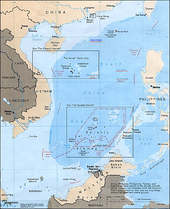 See also:
See also:
China and Japan 2012 – Senkaku/Diaoyu Islands
China: energy, economy & environment
The South China Sea An online resource for students, scholars and policy-makers interested in South China Sea regional development, environment, and security issues
(BBC) Q&A: South China Sea dispute
Rival countries have squabbled over territory in the South China Sea for centuries – but a recent upsurge in tension has sparked concern that the area is becoming a flashpoint with global consequences.
From Wednesday Night #1585: The South China Sea, a pervasive entity in adventure novels of the late 19th and early 20th century, is now a star in a 21st century geopolitical melodrama/docudrama, complete with the search for treasure (in this case rare earths).
+++++++++++++++++++++++++++++
23 December
U.S., Chinese warships narrowly avoid collision in South China Sea
(Reuters) – A U.S. guided missile cruiser operating in international waters in the South China Sea was forced to take evasive action last week to avoid a collision with a Chinese warship maneuvering nearby, the U.S. Pacific Fleet said in a statement on Friday.
The near miss was the most significant U.S.-China maritime incident in the South China Sea since 2009, said security expert Carl Thayer at the Australian Defense Force Academy.
Heightened tensions over China’s military assertiveness have raised concerns that an minor incident in disputed maritime waters, the South China Sea and East China Sea, could quickly escalate.
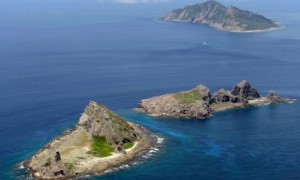
25 November
Japan’s PM demands China revoke claim to air zone over disputed islands
China, Japan and US exchange increasingly testy accusations, as airlines say they will have to notify China of flight plans
China’s new maritime air defence zone is unenforceable, Japan’s prime minister Shinzo Abe said on Monday, in a continuing war of words over air space that includes the area above islands claimed by both countries.
23 November
China imposes airspace restrictions over Japan-controlled Senkaku islands
China says it is exercising self-defence right but experts say move will exacerbate tension between the two nations
China has tried to establish its authority over Japanese-controlled islands in the East China sea by demanding that all aircraft flying in the region obey its rules or face “emergency defensive measures”.
The East China sea air defense identification zone came into effect from 10am local time on Saturday when the Chinese defence ministry issued a map of the area, which includes the uninhabited East China sea islands.
The ministry said all aircraft entering the zone must notify Chinese authorities and warned they would be subject to emergency military measures if they did not identify themselves or obey orders.
26 July
China’s coastguard confronts Japanese ships near disputed islands
China says its ships ‘sternly declared’ sovereignty over the islands, known as Senkaku in Japan and Diaoyu in China
(The Guardian) Ships from Chinese civilian agencies have maintained a steady presence in the area since tensions spiked in September following Japan’s purchase of some of the islands from their private owners.
Those vessels are being replaced by ships from the coastguard, which was formally inaugurated on Monday and merges the resources of four former agencies. China says the move was intended to boost its ability to enforce its maritime claims, upping the stakes in an increasingly tense competition for marine territory and resources in waters off its eastern and south-eastern coasts.
31 May
Vietnam PM seeks regional unity as China pushes maritime claims
(Reuters) – Vietnam’s prime minister called for unity among Southeast Asian countries as China asserts its claims to the energy-rich South China Sea, warning that any conflict could disrupt international trade and the global economy.
Tensions in the decades-old territorial dispute between six Asian claimants have risen in recent weeks after Chinese vessels converged near a ship the Philippines ran aground on a reef in 1999 to mark its territory.
28 May
Cleo Paskal: New Lend-Lease for Indo-Pacific Allies
One way to undermine Chinese strategic calculus, and to ensure peace, is to build up a credible regional deterrent. Korea, Singapore and Japan have advanced (though small compared to China) navies and, if they work together, can start to head in that direction.
Additionally, the US could offer ‘lend lease’ agreements to other, less militarily advanced nations that are persistently targeted by China, in particular Vietnam, Philippines and India.
(HuffPost) On August 28, 2012, Chinese Air Force Colonel Dai Xu wrote a commentary for the Chinese-language edition of the Communist Party’s Global Times. It read, in part:
Since we have decided that the US is bluffing in the East China Sea, we should take this opportunity to respond to these empty provocations with something real. This includes Vietnam, the Philippines and Japan, who are the three running dogs of the United States in Asia. We only need to kill one, and it will immediately bring the others to heel.
The Colonel was not reprimanded for his inciting comments. Rather, he is just one of a growing chorus of increasingly aggressive, and outspoken, Chinese military leaders. Rear Admiral Zhang Zhaozhong has said that the US would “run like a rabbit” if China went to war with Japan over the Diaoyu Islands, and that Chinese naval superiority is so great, “If there is a clash in the South China Sea, the possibility that foreign countries would intervene is low, and any conflict would not last long.” …
We are in a situation now in which allies have to trust each other. The time of allegiances is over. It is the time for alliances. True alliances. In which we help our friends defend themselves. Not just because it is the right thing to do for them, but because it is the right thing to do for us.
12 March
China to send in surveyors to disputed Senkaku islands
Chinese mapping agency vice-director says team will visit Japanese-controlled territory at an ‘appropriate time’
China will send a team to survey islands at the heart of an increasingly heated dispute with Japan, a Chinese official has said.
It is Beijing’s clearest statement yet that it intends to set foot on the Japanese-controlled territory.
The remarks by the Chinese mapping agency vice-director, Li Pengde, added to the sharpening rhetoric between the two sides over a set of uninhabited islets known as Diaoyu in Chinese and Senkaku in Japanese.
In an interview with the state broadcaster CCTV, Li said China planned to send a team on to the islands to study their layout at an “appropriate time”. Surveying by land would allow the mapping of caves and other features not visible from the air, Li told the station.
26 February
China Tests Japanese and U.S. Patience
(Stratfor) In an interview The Washington Post published just prior to [Japanese Prime Minister Shinzo] Abe’s meeting with U.S. President Barack Obama in Washington, Abe said China’s actions around the disputed Senkaku/Diaoyu islands and its overall increasing military assertiveness have already resulted in a major increase in funding for the Japan Self-Defense Forces and coast guard. He also reiterated the centrality of the Japan-U.S. alliance for Asian security and warned that China could lose Japanese and other foreign investment if it continued to use “coercion or intimidation” toward its neighbors along the East and South China seas
8 February
China, Japan engage in new invective over disputed isles
(Reuters) – China and Japan engaged on Friday in a fresh round of invective over military movements near a disputed group of uninhabited islands, fuelling tension that for months has bedeviled relations between the Asian powers.
4 February
The shadow of 1914 falls over the Pacific
(Financial Times) The flickering black and white films of men going “over the top” in the first world war seem impossibly distant. Yet the idea that the great powers of today could never again stumble into a war, as they did in 1914, is far too complacent. The rising tensions between China, Japan and the US have echoes of the terrible conflict that broke out almost a century ago.
The most obvious potential spark is the unresolved territorial dispute between China and Japan over the islands known as the Diaoyu to the Chinese and the Senkaku to the Japanese. In recent months, the two countries’ aircraft and ships have shadowboxed near the islands. Alarmed, the US dispatched a top-level mission to Beijing and Tokyo in late October, made up of four senior members of the US foreign policy establishment: including Stephen Hadley, who ran the National Security Council for George W. Bush, and James Steinberg, who served as Hillary Clinton’s number two at the State Department.
3 February
PLA trains to fight Asian enemy allied with English-speaking ‘third force’
Scenarios involve fighting Asian enemy allied with America over disputed islands
(South China Morning Post) It could have been just another routine military drill with the pseudo enemy’s jets retreating. But then the pilots of the People’s Liberation Army were caught off guard by chatter over the radio – in English.
By the time they had figured out that they had to confront a third party, their field command – an early-warning plane – had already been shot down, the PLA Daily reported.
Analysts said the inclusion of an English-speaking third party in PLA drills was aimed at sending a message that the Chinese military is preparing for possible intervention by the United States if China clashes militarily with neighbouring countries over territorial disputes.
Dispute over East China Sea islands heads to UN
The United Nations’ Commission on the Limits of the Continental Shelf is slated this year to address the territorial claim by China over a group of uninhabited islands in the East China Sea also claimed by Japan and Taiwan. Japan says the world body should play no role in assessing the scientific validity of China’s claim. Reuters (1/24), AlertNet/Reuters (1/25)
19 January
The risks of a clash between China and Japan are rising—and the consequences could be calamitous
(The Economist print edition) CHINA and Japan are sliding towards war. In the waters and skies around disputed islands, China is escalating actions designed to challenge decades of Japanese control. It is accompanying its campaign with increasingly blood-curdling rhetoric. Japan, says the China Daily, is the “real danger and threat to the world”. A military clash, says Global Times, is now “more likely…We need to prepare for the worst.” China appears to be preparing for the first armed confrontation between the two countries in seven decades (see article).
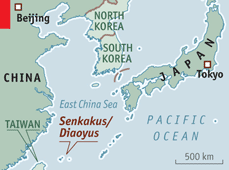
China and Japan have well-known differences over history and territory—most pressingly over five islets, out in the East China Sea, which Japan controls and calls the Senkakus but which China lays claim to and calls the Diaoyus. Rational actors with deeply entwined economies are supposed to sort out their differences, or learn to put them safely to one side. At least, that was the assumption with China and Japan.
2012
Economist Asia editor looks back at a year of rising tensions in the South and East China Seas (embedded video)
Confusion over China’s South China Sea policy
China’s Hainan province recently authorized police to intercept foreign vessels operating in much of the South China Sea, and the policy is sowing confusion and conflict, John Ruwitch writes. India said it will send navy ships to the region, and Vietnam and the Philippines issued verbal protests. Reuters (12/10)
Trespassers To Be Prosecuted: China’s Latest Billboard In South China Sea – Analysis
(Eurasia Review) Hainan’s issuance of the ordinance has invited the ire of several nations, with Vietnam responding by planning to send its own naval patrols to safeguard its interests in the region. The ordinance also raises questions about the freedom of navigation and specifically passage rights of ships in disputed areas not internationally recognised as belonging to any nation. The issue as to who will decide if the passage is innocent has always remained a grey area. Therefore, nations could reserve the right to employ rules of engagement to thwart an ‘illegal’ boarding or not to comply with an ‘illegal’ request to alter course out of such disputed waters
28 September
Taiwan enters island fray, but China and Japan shrug
Boats from China and Japan chased each other around a set of disputed islets, setting off a diplomatic crisis. But when Taiwan entered the fray, neither side seemed to care.
(CSM) The government in Taipei said last week it wanted to be a peacemaker in a sovereignty dispute involving a set of uninhabited islands in the East China Sea. Boats from China and Japan had chased each other around the islets they both claim, setting off mass protests in China that sent Sino-Japanese relations to a new low.
Then this week, Taiwan stopped talking about peace as 12 of its coast guard vessels escorted some 50 Taiwanese fishing boats to the islets, a sort passive-aggressive reminder of its own claim to islets that are 137 miles from Taiwan. Japan controls the islands, which it calls the Senkakus, and sprayed water cannons at Taiwan’s boats to keep them away.
24 September
The even smaller rocks Japan and China are fighting over
(Foreign Policy) … To be clear, this fight differs from the Diaoyu/Senkaku dispute in that China does not want Okinotorishima (translated as “remote bird island”), or challenge Japan’s claim. But the Okinotorishima fight highlights the geopolitics often underlying these island feuds: Japan has gone to such lengths to preserve Okinotorishima because possession of the tiny islets lets Japan claim an extra 150,000 square miles of exclusive economic zone, strategically located between Taiwan and US military bases on Guam. China – which been accused of violating Japanese sovereignty by mapping the sea floor around the islands – claims that they are not islands at all, but marine rocks, and therefore not entitled to their own EEZ (the UN Convention on the Law of the Sea says that rocks must be able to sustain “human habitation or economic life” before they get an EEZ). A recent UN panel on the issue has generated claims of victory from both sides.
At this point, the geopolitics of the Diaoyu/Senkaku fight have been mostly overshadowed by issues of historical grievances and nationalism – however, these islands, too, would give China and Japan EEZ rights to waters potentially containing significant oil and gas reserves. Similarly, the Okinotorishima fight, while at heart a geopolitical one, has occasionally also been complicated by nationalist feelings: following the Chinese crying foul over the islets in 2004, the right-learning Nippon Foundation scrambled to construct a lighthouse that would help generate “economic life”, and help bolster their claim that it’s more than a reef.
Understanding the China-Japan Island Conflict
(Stratfor) Sept. 29 will mark 40 years of normalized diplomatic relations between China and Japan, two countries that spent much of the 20th century in mutual enmity if not at outright war. The anniversary comes at a low point in Sino-Japanese relations amid a dispute over an island chain in the East China Sea known as the Senkaku Islands in Japan and Diaoyu Islands in China.
These islands, which are little more than uninhabited rocks, are not particularly valuable on their own. However, nationalist factions in both countries have used them to enflame old animosities; in China, the government has even helped organize the protests over Japan’s plan to purchase and nationalize the islands from their private owner. But China’s increased assertiveness is not limited only to this issue. Beijing has undertaken a high-profile expansion and improvement of its navy as a way to help safeguard its maritime interests, which Japan — an island nation necessarily dependent on access to sea-lanes — naturally views as a threat. Driven by its economic and political needs, China’s expanded military activity may awaken Japan from the pacifist slumber that has characterized it since the end of World War II. Read more: Understanding the China-Japan Island Conflict | Stratfor
14 September
Stronger Chinese Navy Worries Neighbors and US
(Spiegel) China and the US seem to be on a collision course in the Pacific. Beijing is significantly bolstering its navy, and Washington is shifting its military focus to Asia-Pacific Region. Many fear it could alter the balance of power in a region rich in oil and crucial for global trade.
It is difficult to overstate the economic and military importance of the South China Sea, which connects the Indian Ocean to the Pacific. Over half the annual tonnage of all the world’s merchant navies is shipped through adjacent sea routes here, and the region sees a third of the world’s maritime traffic. Eighty percent of China’s crude oil imports pass through here, and the seafloor holds an estimated 130 billion barrels of crude oil and 9.3 trillion cubic meters (328 trillion cubic feet) of natural gas.
3 September
Joseph Nye: Asian Nationalism at Sea
(Project Syndicate) In 2002, China and ASEAN agreed on a legally non-binding code of conduct for managing such disputes, but, as a large power, China believes that it will gain more in bilateral rather than multilateral negotiations with small countries. That belief was behind China’s pressure on Cambodia to block ASEAN’s final communiqué this summer.
But this is a mistaken strategy. As a large power, China will have great weight in any circumstance, and it can reduce its self-inflicted damage by agreeing to a code of conduct.
As for the Senkaku/Diaoyu Islands, the best proposal comes from The Economist. China should refrain from sending official vessels into Japanese waters, and use a hotline with Japan to manage crises generated by nationalist “cowboys.” At the same time, the two countries should revive a 2008 framework for joint development of disputed gas fields in the East China Sea, and Japan’s central government should purchase the barren islands from their private owner and declare them an international maritime protected area.
U.S.-China talks to highlight Pacific disputes
U.S. Secretary of State Hillary Clinton is slated to meet with high-ranking officials in China amid rising tensions over competing national interests in the South and East China Seas. Clinton has urged the resolution of Asia-Pacific disputes “without coercion, without intimidation, without threats and certainly without the use of force.” Reuters (9/4), Los Angeles Times (tiered subscription model) (8/29), NBC News/Reuters (9/4), The Economist/Analects blog (8/6)
Troubled waters
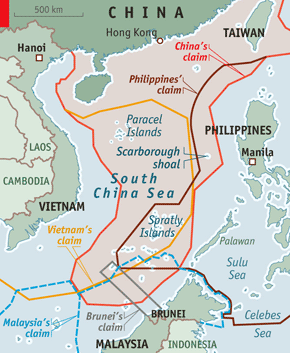
(The Economist) LONG a zone of contention among a number of littoral states, the South China Sea is fast becoming the focus of one of the most serious bilateral disputes between America and China. Over the weekend China’s foreign ministry summoned an American diplomat to express “strong dissatisfaction and resolute opposition” to a statement issued by the state department on August 3rd.
The specific Chinese complaint this weekend was over America’s criticism of its recent upgrading of the administrative level of Sansha city, on one of the Paracel islands (known in China as the Xisha), from a county to a prefecture, and the establishment of a new military garrison there. In its riposte China judged its own decision to be “normal and reasonable”, though only a few hundred people live on the islets covered by the vast new maritime prefecture.
More broadly, China complains that America is taking sides in the many territorial disputes in the sea. China and Taiwan both claim virtually all the sea. Vietnam claims the Paracels, from which it was evicted by China in 1974, as well as the Spratly chain further to the south. In the south both overlap extensively with the exclusive economic zone the Philippines claims under the United Nations Convention on the Law of the Sea (UNCLOS).
Further complicating things, Malaysia and Brunei also have smaller territorial claims, and the regional club to which they, the Philippines and Vietnam all belong, the Association of South-East Asian Nations (ASEAN), has tried to play a co-ordinating and mediating role.
3 August
US voices concern over South China Sea rows
(Al Jazeera) US accuses China of raising tensions through a new military garrison in the South China Sea.
Salami Slicing in the South China Sea
China’s slow, patient approach to dominating Asia.
(Foreign Policy) … in June, the Chinese government established “Sansha City” on Woody Island in the Paracel chain, which China seized from South Vietnam in 1974. Sansha will be the administrative center for China’s claims in the South China Sea, to include the Spratly Islands near Reed Bank and Palawan, and Scarborough Shoal. China also announced plans to send a military garrison to the area. China’s actions look like an attempt to gradually and systematically establish legitimacy for its claims in the region. It has stood up a local civilian government, which will command a permanent military garrison. It is asserting its economic claims by leasing oil and fishing blocks inside other countries’ EEZs, and is sending its navy to thwart development approved by other countries in the area. At the end of this road lie two prizes: potentially enough oil under the South China Sea to supply China for 60 years, and the possible neutering of the U.S. military alliance system in the region.
31 July
Philippines to auction South China Sea exploration blocks
(BBC) The Philippine government is set to auction off three areas in the South China Sea for oil and gas exploration that are also claimed by China.
“All the areas we have offered are well within the 200 nautical mile exclusive economic zone of the Philippines under the UNCLOS (United Nations Convention of the Law of the Seas),” said Jose Layug, an undersecretary in Manila’s Department of Energy.
“Thus the Philippines exercises exclusive sovereign rights and authority to explore and exploit resources within these areas to the exclusion of other countries. There is no doubt and dispute about such rights.”
However the waters, which are claimed by several other countries, are a source of tension in the region.
The blocks being auctioned are off Palawan province, near Malampaya and Sampaguita where natural gas was discovered.
25 July
China morning round-up: South China Sea city opens door
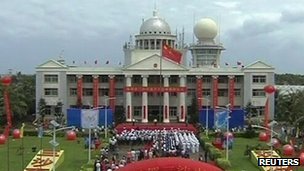 (BBC) Newspapers report the inauguration of the local government in Sansha City, set up recently by Beijing to govern disputed South China Sea islands. The new government held a ceremony on Yongxing Island in the Paracels – known as Woody Island in English – where the mayoral office sits.
(BBC) Newspapers report the inauguration of the local government in Sansha City, set up recently by Beijing to govern disputed South China Sea islands. The new government held a ceremony on Yongxing Island in the Paracels – known as Woody Island in English – where the mayoral office sits.
24 July
Stirring up the South China Sea (II): Regional Responses
(International Crisis Group) The South China Sea dispute between China and some of its South East Asian neighbours – Vietnam, the Philippines, Malaysia and Brunei – has reached an impasse. Increasingly assertive positions among claimants have pushed regional tensions to new heights. Driven by potential hydrocarbon reserves and declining fish stocks, Vietnam and the Philippines in particular are taking a more confrontational posture with China. All claimants are expanding their military and law enforcement capabilities, while growing nationalism at home is empowering hardliners pushing for a tougher stance on territorial claims. In addition, claimants are pursuing divergent resolution mechanisms; Beijing insists on resolving the disputes bilaterally, while Vietnam and the Philippines are actively engaging the U.S. and the Association of Southeast Asian Nations (ASEAN). To counter diminishing prospects of resolution of the conflicts, the countries should strengthen efforts to promote joint development of hydrocarbon and fish resources and adopt a binding code of conduct for all parties to the dispute. (Read full report)
18 July
Indonesia scrambles to end ASEAN rift over South China Sea disputes, seeks nonaggression pact
(WaPost) Indonesia’s top diplomat started an emergency trip to Southeast Asian nations Wednesday to ease differences among them over the handling of territorial disputes in the South China Sea.
Foreign ministers of the 10-nation bloc failed to issue a concluding joint statement after their annual meeting in Phnom Penh last week when host Cambodia rejected a proposal by the Philippines and Vietnam to mention their separate territorial disputes with China in the statement.
The absence of a post-conference statement was unprecedented in ASEAN’s 45-year history and underscored the divisions within the group over the handling of the South China Sea disputes, which involve four of its members — Brunei, Malaysia, the Philippines and Vietnam. The four, along with China and Taiwan, have long contested ownership of potentially oil- and gas-rich territories and recent spats have raised alarm.
12 July
South China Sea issue dominates ASEAN summit
(Al Jazeera) US warns of more conflict if China doesn’t agree to maritime code, as Philippines and Vietnam push for code of conduct. The Philippines is leading a push for ASEAN to unite and draw up a code based on a UN law on maritime boundaries that would delineate the areas belonging to each country. Beijing is unlikely to accept this, however. This push came as Beijing invited bids for exploration of oil blocks in waters claimed by Vietnam, which has sparked protests on the streets of the capital, Hanoi.
10 July
The troubled waters of the South China sea
(Foreign Policy) For China’s top leaders, this is not a good time for confrontations with the neighbors. The country’s once-a-decade leadership transition is expected to unfold this fall, and neither outgoing nor incoming officials want uncertainty or ugly international headlines to interfere with the official choreography.
Thus the worry that Asian governments like the Philippines and Vietnam, emboldened by a commitment from Washington to maintain a robust strategic presence in the region, are pushing more aggressively to assert territorial claims in the South China Sea. More worrisome still, China’s leaders face patriotic pressures from within for a forceful response.
China and its neighbors could be working together on joint oil and gas exploration in these disputed waters. Proven and undiscovered oil reserves in the South China Sea are estimated to be as high as 213 billion barrels, according to a 2008 report from the U.S. Energy Information Administration. If accurate, that’s larger than the proven oil reserves of all but Saudi Arabia and Venezuela. But territorial disputes continue to block efforts to prove these estimates, and the potential for open hostilities in the area is growing, threatening to disrupt trade flows and stoking regional tensions.
8 July
Japan Plan to Buy Islands Draws China’s Condemnation
(Bloomberg) The dispute over who controls the islands, known as Senkaku in Japanese and Diaoyu in Chinese, escalated in April after Tokyo Governor Shintaro Ishihara said he wanted to use public money to buy them. Sovereignty over the area, which has undersea natural gas and oil fields, has been a flash point between the world’s second- and third-largest economies.
21 June
China tests troubled waters with $1 billion rig for South China Sea
(Reuters) – China has spent nearly $1 billion on an ultra-deepwater rig that appears intended to explore disputed areas of the South China Sea, one of Asia’s most volatile hotspots and where the United States is strengthening ties with Beijing’s rival claimants.
For now, the locally built Haiyang Shiyou (Offshore Oil) 981 rig owned by China’s state-run CNOOC oil company is drilling south of Hong Kong in an area within Beijing’s ambit. But Chinese energy experts say Beijing will eventually move its first ultra-deepwater rig to explore in deeper and more oil-rich waters further south in the South China Sea, where China, Vietnam, the Philippines, Taiwan, Malaysia and Brunei have overlapping territorial claims.
23 April
Stirring up the South China Sea (I)
(International Crisis Group) The conflicting mandates and lack of coordination among Chinese government agencies, many of which strive to increase their power and budget, have stoked tensions in the South China Sea. Repeated proposals to establish a more centralised mechanism have foundered while the only agency with a coordinating mandate, the foreign ministry, does not have the authority or resources to manage other actors. The Chinese navy’s use of maritime tensions to justify its modernisation, and nationalist sentiment around territorial claims, further compound the problem. But more immediate conflict risks lie in the growing number of law enforcement and paramilitary vessels playing an increasing role in disputed territories without a clear legal framework. They have been involved in most of the recent incidents, including the prolonged standoff between China and the Philippines in April 2012 in Scarborough Reef. Any future solution to the South China Sea disputes will require a consistent policy from China executed uniformly throughout the different levels of government along with the authority to enforce it. Read full Report (.pdf)
2011
19 April
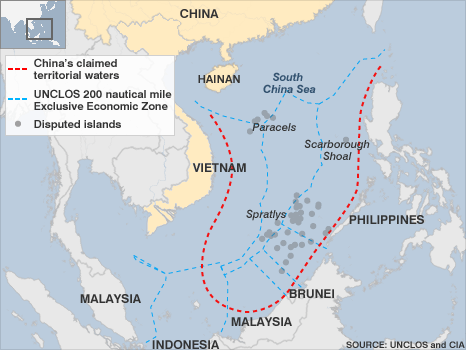 BBC image
BBC image
Oil bonanza in South China Sea
(Global Times) At a press conference Thursday, Hong Lei, spokesman of the Ministry of Foreign Affairs, reiterated that China has indisputable sovereignty over the South China Sea islands and adjacent waters.
The region has abundant resources of oil and natural gas, and some surrounding countries have been exploring resources there for years.
As part of the strategy to deepen the exploitation of deep-water resources, China has stepped up efforts in oil and natural gas mining in the areas, but overall levels of investment and production are considerably smaller than those of nearby countries such as Vietnam and the Philippines.
Although the government has expanded exploration in the area in the hopes of easing China’s dependence on imported oil, technological limitations and continued explorations from surrounding countries that disregard Chinese claims over the areas are hindering the ambitious plan.
Next Daqing?
The South China Sea, dubbed the “second Persian Gulf,” is rich in natural resources of oil and gas. It is estimated that the area contains over 50 billion tons of crude oil and more than 20 trillion cubic meters of natural gas.

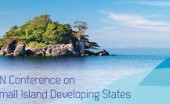
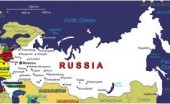
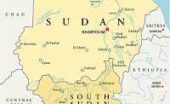
3 Comments on "China Seas"
Nicks Gleanings:
The Philippine government announced on January 21st that “after exhausting almost all political and diplomatic avenues”, it plans to take its maritime dispute with China over the Scarborough Shoal (located 200 miles West of Subic Bay & roughly 4x that far from China) to a UN Law of the Sea arbitration tribunal, in the hope this will produce a “desirable solution”. China’s ambassador to the Philippines lost no time reiterating the Beijing line that “China has indisputable sovereignty over the islands in [the] South China Sea and its adjacent waters.” Since November Beijing has been issuing passports with a map showing the entire South China Sea as Chinese territory in an attempt to force other nations to ‘endorse’ its claims when their officials stamp them.
Nick’s Gleanings #506
CHINESE NAVY MAKES PRESENCE FELT AT DISPUTED SHOAL (Stars & Stripes, E. Slavin)
On March 25th a Chinese amphibious task force conducted patrol & training missions at the uninhabited James Shoal in the South China Sea. It was led by the 19,000 ton, 700 foot-long Jinggangshan, one of the most sophisticated & newest ships in the Chinese Navy (commissioned just a year ago), capable of carrying helicopters, marines & air-cushion landing craft. According to Xinhua & the People’s Daily Online Beijing “is determined to safeguard the country’s sovereignty with their services in the South China Sea.”
The James Shoal is located in the Southern-most periphery of the South China Sea on the Continental Shelf of Malaysia’s North Borneo territory, just 50 miles off its coast but 1,100 miles from the nearest China landfall. While the rest of the world considers much of the South China Sea international waters, Beijing purports it is an “inland sea” & claims sovereignty over just about all of it. Meanwhile the PLA’s navy also has a fleet of three, almost brand-new, vessels, the Haijian 50, 26, & 66, on patrol in the Diaoyu/Senkaku Island waters, telling Japanese ships there that the islands belong to China & they’d better skedaddle
American Bombers Defy Chinese Air Defense Zone
________________________________________
Top news: The United States defied China’s newly announced “air defense identification zone” by sending two unarmed B-52 bombers into the area, a flight that Chinese officials said Wednesday they had monitored but declined to take action against.
The two planes, which U.S. officials say were on a routine training mission, declined to file their flight paths with the Chinese aviation authorities as the rules of the zone stipulate. The Chinese air defense zone overlaps with that of its regional rival Japan and includes a series of islands at the center of a territorial dispute between the two countries. The creation of the zone is but the latest attempt by China to assert itself as a regional power, but Japanese and U.S. officials so far appear to be unimpressed. In addition to the B-52s, Japanese commercial airliners announced that they will not abide by the new rules.
In explaining why the Chinese government had declined to take action against the American planes, a Chinese Foreign Ministry spokesman said that any Chinese response would depend on the size of the threat. The large size of the zone — roughly equivalent to the state of California — and China’s inability or unwillingness to counter the overflight of a pair of American bombers is also raising questions about China’s ability to police the new zone. “It is just not yet clear how they are going to enforce it,” Christian Le Miere, a military analyst at the International Institute of Strategic Studies in London, told Reuters. “It may be more a rhetorical position to serve a political end.” (Foreign Policy)